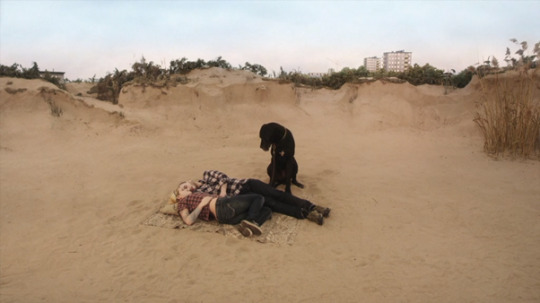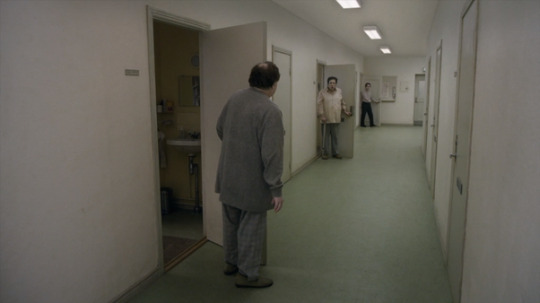#High-resolution SPI camera
Explore tagged Tumblr posts
Text
In Search of a High-Quality 0.3mp SPI Camera Module for Security Systems? Here is a Solution for You!
A high-quality 0.3mp SPI camera module is built using top-notch materials. CK Vision’s camera module manufacturer creates a long-lasting device that provides sharp and clear images during video conferencing and other machine visions. CK Vision offers a variety of modules. You can get the best modules here.

visit website : https://www.cameramanufacturer.com/
#Security camera module#High-resolution SPI camera#Surveillance technology#Security system components#Electronic components
0 notes
Text
Updated: June 15, 2025
Reworked Group #4: S.P.A.R.R.O.W.S.
Overview
Tequila and Red Eye successfully dismantled a rogue military organisation engaged in illicit human trafficking and arms dealing, which had also planned to launch a global bioterrorist attack in collaboration with the Pipovulaj. The plot involved spreading a plague to control the population, transforming numerous innocent civilians into violent Man Eaters as a means to create a twisted form of super soldier. Impressed by the exceptional performance of Tequila and Red Eye as highly capable spies, the Intelligence Agency and Regular Army jointly established a covert operations branch, S.P.A.R.R.O.W.S., through a mutual agreement.
The S.P.A.R.R.O.W.S. is responsible for gathering intelligence and managing information to prevent public panic and global hysteria. They provide their members with specialised training in high-risk covert operations that surpass the scope of regular Intelligence Agency agents, which are all conducted with utmost discretion and situational awareness. Some of these special covert operation missions involve precision targeting of high-priority threats and strategic disruption of complex criminal schemes.
They're known to have the fewest members among the military branches of the Regular Army, often numbering between 100 and 150. This small size means that each agent is familiar with the others, even if they're not family, friends or acquaintances. This familiarity significantly contributes to their nearly perfect teamwork achievements, allowing them to complete duties more quickly and efficiently when working together.
Insignia
It features a cerulean square Iberian shield, rimmed with a spiky teal vine that’s outlined in bronze. Above the shield, the words "S.P.A.R.R.O.W.S." are inscribed in bluish-white, surmounting a stylized pair of bronze eyes with a yellowish-white star at their centre. The shield is flanked by a stylized peregrine falcon holding a gilded blade on the right side and a male house sparrow clutching an olive branch on the left side.
S.P.A.R.R.O.W.S. Base
The Intelligence Division is tactically positioned adjacent to the Joint Military Police Headquarters, deeply entrenched within a dense and remote forest in Northern Russia. The rectangular military compound features a forest-inspired camouflage colour scheme, a secure warehouse for military vehicles, multiple surveillance cameras, and several elevators leading to a subterranean base. They have a rooftop array of parabolic antennas that enables real-time surveillance, threat detection, and situational awareness, preventing surprise attacks and informing strategic decision-making. The base features comprehensive protection through an advanced security system and a defensive magnetic field, which automatically activates in response to potential threats, safeguarding against enemy attacks.
The base features a state-of-the-art command and surveillance centre, equipped with cutting-edge technological systems to orchestrate and execute operations. Additional facilities include:
An armoury housing the group’s most cutting-edge, high-clearance weaponry and specialised ordnance.
A high-tech meeting room with a high-resolution, encrypted display screen and multi-axis, AI-enhanced holographic projection system.
A state-of-the-art gymnasium for maintaining elite physical readiness, featuring biometric monitoring systems and AI-driven training programs.
A fully equipped, high-tech medical bay with regenerative treatment capabilities and telemedicine connectivity for remote expert consultation.
A secure dining area serving optimised, nutrient-rich rations for peak performance.
A high-security quarters with biometrically locked storage for personal gear and AI-monitored, secure communication arrays.
A Combat Academy, led by Margaret Southwood, featuring a heavily fortified training area with advanced combat simulation zones, tactical obstacle courses, stealth and surveillance training areas, and high-tech weapons testing ranges.
Extra Information
S.P.A.R.R.O.W.S. stands for Special Pursuit Agents and Rapid Response Operations Worldwide Strikeforce.
Members of the S.P.A.R.R.O.W.S. are commonly known as "Sparrowers" or "Following Falconers", reflecting their affiliation with the unit and their close relationship with the P.F. Squad.
Despite being part of an elite covert operations branch, Sparrowers face a significant pay disparity: males earn a quarter of the average government agent's salary, while females earn about a third. Additionally, underperforming Sparrowers, both male and female, experience further financial hardship due to delayed salary payments, often waiting between one to two months to receive their overdue compensation.
The S.P.A.R.R.O.W.S. conduct their covert operations in collaboration with the Peregrine Falcons Squad who provide primary firepower and protection for their agents.
The handguns carried by Sparrowers are the Murder Model-1915 .38 Mk.1Am or Classic Murder .38 for short. It’s a double-action revolver that features a 6-round cylinder. Originally designed to enhance the Enfield No.2 .38 Caliber revolver in 1915, the Murder Model retained only the frame and grip from the original. All other components were replaced with newer parts in later years.
#writerscorner#creative writing#writing#iron eclipse au#metal slug#snk#gaming community#rework#redesign#history#insignia#logo#base#headquarters#extra information#sparrows#tequila#red eye#margaret southwood
12 notes
·
View notes
Video
Perspective view of Mars’s Tharsis volcanoes by European Space Agency Via Flickr: This oblique perspective view shows a slice of Mars imaged to mark a milestone for ESA’s Mars Express: its 25 000th orbit around the Red Planet. It was generated from a digital terrain model and the nadir (downward-pointing) and colour channels of Mars Express’s High Resolution Stereo Camera. The vertical scale is exaggerated by a factor of approximately three, making the volcanoes look three times higher than they are in real life. Three of Mars’s famously colossal volcanoes are shown here: from left to right, Arsia, Pavonis and Ascraeus Mons. The mound of Mars’s largest volcano, Olympus Mons, can be spied further away at the top of the frame, while the fractured terrain of Noctis Labyrinthus, Mars’s ‘labyrinth of night’, can be seen in the foreground. Read more [Image description: This image shows a tan-coloured portion of Mars, with the curvature of the planet visible to the top left the frame. Four of Mars’s volcanoes can be seen in relief against the dark background, shown as darker mounds stretching away from the viewer.] Credits: ESA/DLR/FU Berlin, CC BY-SA 3.0 IGO
#ESA#European Space Agency#Space#Universe#Cosmos#Space Science#Science#Space Technology#Tech#Technology#Mars#Dunes#Panorama#Marte#Solar System#Sol#Mars Express#HRSC#High Resolution Stereo Camera#DLR#Red Planet#Exploration#Phobos#Volcano#Arsia Mons#Pavonis Mons#Ascraeus Mons#Olympus Mons#Noctis Labyrinthus#flickr
3 notes
·
View notes
Text
Boost SMT Quality with Automated Optical Inspection
Surface Mount Technology (SMT) has become the backbone of modern electronics manufacturing. As circuit boards grow more complex and component sizes continue to shrink, maintaining production quality has become more challenging. To address this, manufacturers rely on SMT automated optical inspection systems to enhance efficiency and ensure product reliability.
What Is SMT Automated Optical Inspection?
SMT automated optical inspection (AOI) is a high-speed visual inspection process used to verify the placement, alignment, and soldering of components on a printed circuit board (PCB). Using high-resolution cameras and advanced image processing algorithms, AOI systems scan each board for potential defects during or after assembly.
By catching issues early, these systems reduce rework, prevent defective units from moving forward, and increase yield rates. AOI is typically deployed at multiple points in the production line, including:
Post-solder paste inspection
Pre-reflow inspection
Post-reflow inspection
Each inspection stage targets specific issues such as insufficient solder, component misalignment, or solder bridging.
Why SMT AOI Is Critical to Electronics Manufacturing
The electronics industry demands tight tolerances and minimal defect rates. Even a single misplaced component can lead to product failure. Here's how SMT automated optical inspection supports manufacturing excellence:
1. Enhanced Accuracy
Automated inspection provides greater consistency than manual methods. It can detect:
Incorrect component orientation
Missing components
Cold solder joints
Tombstoning and lifted leads
These defects are often too subtle or time-consuming to spot with manual inspection.
2. Real-Time Feedback
Modern AOI systems integrate seamlessly into SMT lines, providing real-time defect detection and process feedback. When an issue is identified, operators receive alerts to make immediate adjustments. This minimizes downtime and material waste.
3. Scalable Performance
As demand increases, manual inspection becomes a bottleneck. AOI systems handle high-speed production environments with ease, inspecting hundreds of boards per hour without sacrificing accuracy. This makes SMT automated optical inspection ideal for both high-volume and high-mix production lines.
Benefits of Implementing AOI in SMT Production
Investing in AOI provides a range of tangible benefits:
Improved Product Quality: Early detection leads to fewer returns and better customer satisfaction.
Lower Operational Costs: Reducing scrap and rework translates to cost savings.
Faster Time to Market: Streamlined inspection accelerates the production cycle.
Compliance and Traceability: AOI systems often include data logging and defect classification features, aiding in quality audits and process optimization.
Common Defects Detected by SMT AOI
Effective inspection covers a wide array of potential issues, including:
Component misplacement
Solder bridges
Open circuits
Polarity errors
Solder balling
Insufficient or excessive solder
With high-resolution imaging and intelligent algorithms, AOI tools identify and classify these defects rapidly and with minimal human oversight.
Integrating AOI with Other SMT Equipment
For optimal results, AOI should be part of a fully integrated SMT inspection strategy. When combined with solder paste inspection (SPI) and X-ray inspection, manufacturers gain a full view of the assembly process. This layered approach ensures each stage is validated before moving to the next.
For instance, SPI evaluates solder paste deposition before components are placed, while AOI checks component placement and solder joints. In cases where defects may be hidden (like under BGAs), X-ray inspection complements AOI to provide a complete defect profile.
Choosing the Right AOI System
Selecting an appropriate AOI solution depends on several factors:
Board complexity
Component density
Production volume
Required inspection speed
Advanced AOI systems offer features such as 3D imaging, machine learning algorithms, and intuitive software interfaces. These innovations reduce false calls, simplify programming, and improve inspection reliability.
To explore AOI systems designed specifically for SMT applications, visit ASC International. Their cutting-edge technology supports manufacturers looking to improve inspection accuracy and throughput.
Final Thoughts
As electronics manufacturing grows more demanding, quality assurance tools must keep pace. SMT automated optical inspection provides the speed, accuracy, and consistency needed to meet today’s rigorous production standards. By identifying defects early and ensuring high-quality output, AOI protects your bottom line and strengthens customer confidence.
0 notes
Text
UBTECH UGOT kit-AI Space Exploration version - ROBOSTEAM
https://robosteam.ro/product/ubtech-ugot-kit-ai-space-exploration-version/
Arduino GIGO R1 WIFI is the moat powerfull Arduino board ever, the GIGA R1 is based on the same microcontroller as thr Portenta H7, the STM32H747. The Arduino I/O pin can handle 40ma as an absolute maximum without damage to the Arduino. The STM32H7x7 lines combine the performance of the Cortex-M7 (with double-precision floating point unit) running up to 480 MHz and the Cortex-M4 core (with single-precision floating point unit)
- PERFORMANCE
480 MHz fCPU on the Cortex-M7, 240 MHz on the Cortex-M4, 3224 CoreMark / 1327 DMIPS executing from Flash memory with 0-wait states thanks to its L1 cache
L1 cache (16 Kbytes of I-cache +16 Kbytes of D-cache) boosting execution performance from external memories
- Security
Crypto/hash hardware acceleration, secure Firmware Install (SFI) embedded, security services to authenticate protect your software IPs while performing initial programming
Secure Boot Secure Firmware Update (SBSFU)
Power efficiency multi-power domain architecture enables different power domains to be set low-power mode to optimize the power efficiency. Embedded SMPS to scale down the supply voltage, supply external circuitry , combined with the LDO for specific use cases. USB regulator to supply the embedded physical layer (PHY).
145 µ/MHz typical @VDD = 3.3 V and 25 °C in Run mode (peripherals off) and SMPS
2.43 µA typical in Standby mode (low-power mode)
460 nA typical in VBAT mode with RTC (low-power mode)
- Graphics
LCD-TFT controller interface with dual-layer support MIPI-DSI interface for driving the DSI display Chrom‑ART Accelerator™. boosts graphical content creation while saving core processing power, thus freeing up the MCU for other application needs JPEG hardware accelerator for fast JPEG encoding and decoding, off-loading the CPU
- Embedded peripherals
Up to 35 communication interfaces including FD-CAN, USB 2.0 high-speed/full-speed. Ethernet MAC, Camera interface
Easily extendable memory range using the flexible memory controller with a 32-bit parallel interface, or the Dual-mode Quad-SPI serial Flash memory interface.
Analog: 12-bit DACs, fast 16-bit ADCs
Multiple 16- and 32-bit timers running at up to 480 MHz on the 16-bit high-resolution timer
0 notes
Text
TFT LCD Touch Display Manufacturer Choosing the Best Supplier for Your Needs
Touchscreen technology has revolutionized the way we interact with devices, from smartphones and tablets to industrial machinery and medical equipment. TFT LCD touch displays provide high-quality visuals, excellent responsiveness, and durability for various applications. If you're looking for a TFT LCD touch display manufacturer, this guide will help you understand what to consider when choosing the right supplier.
What is a TFT LCD Touch Display?
A TFT (Thin-Film Transistor) LCD is a type of liquid crystal tft lcd touch display manufacturer transistor technology to improve image quality and response time. When combined with a touchscreen interface, it allows users to interact with the display using their fingers or a stylus.
Types of Touch Technology Used in TFT LCD Displays
Capacitive Touch – Highly responsive, supports multi-touch, and used in smartphones and tablets.
Resistive Touch – Works with a stylus or gloved hands, commonly used in industrial and medical devices.
Infrared (IR) Touch – Uses infrared sensors for touch detection, ideal for large displays.
Optical Touch – Utilizes cameras and sensors for accurate touch recognition.
Why Choose a Custom TFT LCD Touch Display?
Businesses often require custom TFT LCD touch displays for specific applications. lcd display module
Screen Size & Resolution: Displays range from small 2-inch screens to large 20+ inch panels.
Brightness & Contrast: High-brightness options for outdoor or industrial environments.
Touch Sensitivity: Custom tuning for optimal touch performance.
Interfaces & Connectivity: HDMI, LVDS, MIPI, SPI, USB, and I²C compatibility.
Ruggedization: Protective coatings, waterproofing, and impact resistance for harsh conditions.
How to Choose the Right TFT LCD Touch Display Manufacturer
Manufacturing Capabilities
A top TFT LCD touch display manufacturer should offer:
Various screen technologies: IPS, OLED, and TN panels.
Flexible customization options: Touch integration, anti-glare coatings, and sunlight-readable displays.
Long-term supply and support: Availability for product lifecycle continuity.
Quality & Certifications
IP Ratings – Water and dust resistance for rugged applications.
Prototyping & Custom Development
A reliable manufacturer should provide:
Rapid prototyping services for testing before mass production.
Custom firmware and driver support for seamless integration.
OEM/ODM services for tailored solutions.
Industry Experience
Choose a manufacturer with expertise in your industry, whether it’s automotive, medical, industrial, gaming, or consumer electronics.
Applications of TFT LCD Touch Displays
Consumer Electronics: Smartphones, tablets, smartwatches.
Automotive: Digital dashboards, infotainment systems.
Medical Devices: Patient monitoring, diagnostic displays.
Industrial Equipment: HMI (Human-Machine Interface), automation displays.
Gaming & Kiosks: Slot machines, interactive kiosks.
Top TFT LCD Touch Display Manufacturers
If you're searching for a trusted TFT LCD touch display manufacturer, consider:
BOE Technology – Leading global LCD and OLED supplier.
AU Optronics (AUO) – High-performance industrial and automotive displays.
Innolux Corporation – Specializes in medical and commercial TFT LCDs.
Tianma Microelectronics – Offers premium small-to-medium TFT LCD panels.
Raystar Optoelectronics – Provides industrial-grade LCD solutions.
0 notes
Text
3D Scanner System Solution Based on FET3576-C Embedded Board
3D scanning, an integrated technology of optics, mechanics, electronics, and computing, captures 3D coordinates and color information of object surfaces through non-contact measurement, generating high-precision 3D models. In game development, 3D scanners have significantly enhanced the realism and detail richness of game scenes, characters, and objects.
The production team of the popular game "Black Myth: Wukong" spent a year using 3D scanning to create precise 3D models of real Buddhist statues, temples, and rocks across China. These models not only provide rich materials and inspiration for game designers but also ensure the authenticity and detail richness of game scenes. By capturing real-world 3D data, every detail in the game accurately reproduces historical features, enhancing the game's cultural depth and artistic value.
Not only in the gaming field, but 3D scanning systems, with their high precision, non-contact measurement, and digitization characteristics, can also contribute to the preservation and restoration of cultural relics. The fire at Notre-Dame Cathedral in 2019 attracted global attention. Prior to this, Notre-Dame Cathedral had already undergone comprehensive data recording using 3D scanning technology. This allows experts to use this data to carry out precise repair work after the fire. In addition, it can also be widely used in surveying and mapping engineering, industrial manufacturing, architectural design, education and scientific research and many other industries.

The 3D scanner, as the core component, is responsible for data acquisition and conversion. It consists of a probe, lens, and camera. The probe collects surface patterns without contact, the lens adjusts the probe position and viewing angle, and the camera converts captured images into digital signals for further processing like denoising, stitching, and optimization.
Hardware implementation faces several challenges:
Complex data processing: Limited by onsite conditions during data collection, processing can be complex, requiring extended post-processing like noise removal and mesh reconstruction, demanding high-performance hardware.
Compatibility issues: Incompatible hardware and software designs for point cloud data processing across different manufacturers hinder resource sharing and conversion, increasing learning and technical difficulties for users.
Environmental sensitivity: Lasers and optical systems are sensitive to temperature changes, requiring frequent calibration and affecting efficiency. External factors like temperature, humidity, and vibration can also impact measurement accuracy, necessitating strict environmental control.
High cost: The hardware cost of 3D scanners is often high, potentially leading to increased product prices and affecting market competitiveness.
Forlinx Embedded recommends using the FET3576-C embedded board as the main controller for 3D scanners. Based on the RK3576 processor, the FET3576-C is a high-performance, low-power, feature-rich, cost-effective solution tailored for AIoT and industrial markets. It integrates four ARM Cortex-A72 and four ARM Cortex-A53 high-performance cores, with a 6TOPS powerful NPU supporting various operations and deep learning frameworks.

(1)Versatile Interfaces
With GPIO, UART, SPI, and other communication interfaces, the FET3576-C precisely controls scanning parameters (e.g., scanning speed, resolution) and sensor states (e.g., laser emitter, camera shutter), enhancing scanning efficiency and quality
(2)Data Processing Hub
As the system's ''brain,'' the FET3576-C processes raw data like laser point clouds and images, ensuring accurate and complete 3D models through filtering, denoising, registration, and fusion.
(3)Intelligent Optimization
6TOPS NPU enables intelligent analysis of scanned data, automatically identifying and optimizing issues like flaws and holes in models, further enhancing their fineness and realism.
(4)Data Transmission and Storage
Supporting up to 4GB LPDDR4 RAM and 32GB eMMC storage, the FET3576-C securely and efficiently stores scan data locally. Additionally, it supports dual Gigabit Ethernet and Wi-Fi for real-time data transmission and remote access.
(5)Product Stability
With a board-to-board connection design, the FET3576-C facilitates easy installation and maintenance. It has undergone rigorous industrial environment testing, providing excellent stability, and a 10-15 year longevity ensures long-term supply reliability for customer products.
Forlinx Embedded FET3576-C embedded board plays a crucial role in 3D scanning systems. As the main controller, it leverages its powerful data processing capabilities and rich interface resources to enable end-to-end control from data acquisition to model output, providing a solid technical foundation for building high-precision and realistic 3D models.
More info:
0 notes
Text
Today we are reviewing the compact system on module based on the versatile Rockchip RK3588 Octa Core SoC, the MIXTILE CORE 3588E. you may also like Mixtile Blade 3 Best New PICO-ITX and Stackable Single-Board MIXTILE CORE 3588E Module Mixtile launches this new high-performance AI board (6 TOPS), with a small form factor (69.6 x 45 mm) with a 260-pin edge connector. It can be used on carrier boards that are compatible with NVIDIA Jetson TX2 NX developer boards. This system-on-module has enough power to run high-resolution video encoding/decoding, graphics processing, and artificial intelligence applications. It is basically a computing module, so all inputs and outputs on the board are made through 260-pin connectors, communicating through four PCIe 3.0 x4 lanes and one PCIe 2.1 lane. The operating systems supported by MIXTILE CORE 3588E are Debian 11, Android 11, Ubuntu 22.04 and Armbian 23.07. Specification of MIXTILE CORE 3588E Module Feature Details Brand Mixtile Model CORE 3588E Processor Rockchip RK3588 (8nm) CPU 4 x ARM Cortex-A76 cores (Up to 2.4 GHz) 4 x ARM Cortex-A55 cores (Up to 1.8 GHz) GPU ARM Mali-G610MC4 RAM Options: 4/16/32 GB LPDDR4 Storage Options: 32/128/256 GB eMMC 5.1 Form Factor Compact System-on-Module (69.6 x 45 mm) AI Performance 6 TOPS Edge Connector 260-pin PCIe Lanes - Four PCIe 3.0 x4 lanes - One PCIe 2.1 lane Operating Systems Debian 11, Android 11, Ubuntu 22.04, Armbian 23.07 Video Outputs - DisplayPort 1.2a (Up to 8K resolutions) - HDMI 2.1 (Up to 8K resolutions) Camera Interfaces - 3 x 4-lane or 5 x 2-lane MIPI CSI @ 2.5 Gbps/lane - 48MP ISP Network Connector 10/100/1000 BASE-T USB Ports - 1 x USB 3.0 (Gen1) - 3 x USB 2.0 Other Connectors - UART DEBUG x1 - UART flow control x2 - SPI x2 - I2C x4 - CAN x1 - I2S x4 - SD 4.0, SDHOST 4.0, and SDIO 3.0 - PWM x3, GPIO x15 The MIXTILE CORE 3588E system-on-module is powered by the Rockchip RK3588 8nm processor. A chip that integrates 4 ARM Cortex-A76 cores at 2.4 GHz and another 4 ARM Cortex-A55 CPUs capable of reaching 1.8 GHz. In the graphics department we have a powerful ARM Mali-G610MC4 GPU. Thank you for completing the Mixtile Core 3568M/3588E Concept Survey! Pre-orders for the Mixtile Core 3568M/3588E system-on-module are now available! You can purchase it at the Mixtile store: https://t.co/YiEPk5b6n1 pic.twitter.com/OBlE21wUaW — Mixtile (@Mixtile) September 1, 2022 For RAM, we have options for all needs, including 4/16/32 GB LPDDR4 versions. For storage, we also have the option of 32/128/256 GB eMMc 5.1. You Can also like Mixtile Blade 3 Mixtile Cluster Box Mixtile Blade 3 Case Mixtile Edge 2 Mixtile Edge 2 Kit Mixtile Core 3588E Mixtile Core 3568 Mixtile Core 3568M Mixtile Core 3568J Mixtile Core 3399E Mixtile Hub Mixtile Telematics Gateway 3 With this board we can use different types of ports such as DisplayPort 1.2a and HDMI 2.1 video output up to 8K resolution. We control up to 3x 4-lane or 5x 2-lane MIPI CSI interfaces with 2.5 Gbps/lane cameras and a 48 MP ISP. We have access to a 10/100/1000 BASE-T network connector, a USB 3.0 (Gen1) and 3 USB 2.0 ports. Price and availability The MIXTILE CORE 3588E SoM can be purchased from the official Mixtile store starting at $109 with shipping at the end of January. Optionally we can add a specific Heatsik for this board with dynamic speed adjustment between 0 and 5000 RPM. The board supports customization, please contact Mixtile for more information.
0 notes
Text
AoI With 21 MP Image Sensor And A Large FOV For Better Inspection


Test Research, Inc. (TRI) has released a high-speed 3D automatic optical inspection (AOI) device, TR7700QH SII. It features an impressive resolution of 15 µm, 21 MP imaging, and a large field of view (FOV) for inspection, the TR7700QH SII sets a new benchmark in terms of inspection performance. The TR7700QH is capable of enhancing the electronics manufacturing industry to achieve greater efficiency, accuracy, and productivity in their operations. The TRI’s new AoI machine is capable of early defect detection, minimizing rework and scrap, thus saving labor costs, and reducing customer returns. Automated Optical Inspection (AOI) provides significant advantages in electronics manufacturing. AOI systems utilize high-resolution cameras and advanced algorithms to detect defects and errors on printed circuit boards (PCBs). This improves quality control by identifying issues like misalignments, missing components, and solder bridging. AOI’s speed and efficiency surpass manual inspections, increasing throughput and meeting production schedules. It ensures consistency and standardization in inspections, reducing subjective errors. AOI also provides valuable data for process optimization, allowing manufacturers to enhance techniques and implement corrective actions. Overall, AOI enhances product quality, customer satisfaction, and competitiveness in electronics manufacturing. According to the company, the AOI machine is capable of achieving speeds of up to 80 cm²/sec, the TR7700QH SII surpasses its predecessor, the TR7700Q SII, offers 40% increase in speed. This 3D AOI system incorporates advanced AI algorithms and TRI’s Smart Programming, offering unparalleled inspection coverage and precision. The TR7700QH SII is built on an enhanced mechanical platform, ensuring stability and precision during inspections while maintaining an efficient cycle time. The TR7700QH SII is specifically designed to cater to high-throughput production manufacturing, particularly in industries such as automotive and telecommunications electronics. It excels in delivering precise metrology measurements and comprehensive inspections for large and high-density boards. One of its standout features is the Multi-Step Function, which enables efficient inspection of components at varying heights, with a maximum of 40 mm. Moreover, the TR7700QH SII supports current Smart Factory Standards, including the IPC-CFX and The Hermes Standard (IPC-HERMES-9852), ensuring seamless integration within modern manufacturing environments. Test Research, Inc. (TRI) is a manufacturer of Automatic Test and Inspection solutions. The company offers solutions including solder paste inspection (SPI), automated optical inspection (AOI), 3D automated X-ray inspection (AXI) systems, manufacturing defect analyzers (MDAs), in-circuit test equipment (ICT), and functional testing (FCT). Source link Read the full article
0 notes
Text
Shoebox Adventures- the power of space in Roy Andersson’s “A Pigeon Sat On A Branch Reflecting On Existence”
In 2014, Swedish commercial-maker Roy Anderson tried to bring his school science fair project to the Cannes film festival. A series of solemn set-pieces on the human condition shot in hyper-real grey spaces that simultaneously evoke familiarity and discomfort, his odd little diorama was bound to make a storm.
Except Cannes rejected it.
But Venice let it in! And thank god they did, saving this cinematic gem from public negligence and (a mere 6 years later) bringing it to my attention! “A Pigeon”, as I will now be referring to it, is almost certainly the strangest film I have ever seen. It might also be one of the most wonderful, thought-provoking and funny films as well. Characters, plot and setting are largely absent or deliberately vague, instead thrown in the all-consuming mixing pot known as ‘mood’. But when you’re telling a story about the nuances and complexities of humanity, it seems stupid to make it like a story. Much of it is left for the viewer to assert their own personal interpretations, to feel what they feel from the film’s peculiar exhibits. Not because “A Pigeon” has set out to confuse or provoke different audiences, but because different people see life differently. And this film has something for those different views. Who knows, it might even help them live alongside one another.
As part of my recent architectural fad, I thought this would be a great chance to explore the power of spaces within films, which is probably the medium in which we consume the largest quantity and variety of architecture. What Anderson has done with his little spaces is all kinds of captivating. Natural and alien, his scenes grow and decay off the tiniest differences. Now, to work!.

The opening scene puts everything on the table as to what we’re in for. Peering at a talcum powdered women scolding a talcum powdered man peering at stuffed birds in the world’s greyest museum, accompanied by plinky strings, you can already tell this isn’t going to infringe on The Fast and the Furious’ turf. The camera sticks 10 feet back from the ‘action’ and never once zooms or pans, so we can continually survey the scene without any distracting close-ups, leaving the characters spied-on but not fully known. The open doorways and windows are everpresent throughout the movie, a clever trick to alleviate feelings of claustrophobia. This also serves to give us a view to equally stately goings-on in the background, which helps to create Andersson’s diorama world. Every wall is flat in colour and texture, the lighting uniformly gloomy with no hint of natural light or shadow. And the cages that hold the taxidermy are metaphors for our cages of loneliness in the modern world, but you knew that already.

This hospital scene starts out as static, a painting-like arrangement of a classic scene, the children witnessing the gradual passing of their mother. Andersson keeps it uncluttered by having the dialogue occur two doorways away.

And yet after pleasantries are dispatched and pretence discarded, the whole scene swirls like Vertigo; the brothers contort, the sister slumps in her chair, the presumed-still body of the mother’s body squawks out in alarm as her bed is dragged sideways across the room. We do not zoom in to see her anguished face, making her all the more powerless and the viewer confused at what to feel. The nurse arrives silently at the threshold, hesitant to cross into this family’s hysteria. She watches the painting come to life and ruin itself, just as we do. The notion of characters watching characters is one that Andersson returns to a lot in “A Pigeon”, which ultimately provides a heavy dose of the film’s realism. In traditionally-shot movies, the two-way dialogue close-ups obscure the silent characters from our interest. Andersson lets us see them gawp, knowing we do too.

A romantic getaway might seem like a departure from the film’s predominantly urban setting, but whilst the sand and soundtrack provides the impression of a beach-scene, we are actually in another of Andersson’s dioramas. The intimacy of the couple is uncomfortable, and not just for the man’s awkward movements or their judging dog. The wall-like dunes rise up, obscuring the horizon as a pair of far-off high rises intrusively leer into shot. The sky is a pastel blue, withholding any sense of time or importance on the moment we’re presented with, the mutt our audience sleeper agent who stiffly watches it unfold.

The closest the film gets to any main characters are a pair of grey-clad salesmen who potter about the scenes with mixed financial success. Throughout the film we get to know them, and thus Sam and Jonathan carry the largest targets on their back for Andersson’s gentle ridicule, here pictured bursting into the bar like outlaws into a wild-west saloon, in which they explain that they’ve gotten lost looking for a mythical shop named ‘Party’. The gorgeous painted background, viewed through a window, is our first glimpse of a horizon- a grey/green wasteland dominated by gargantuan transmission towers. our heroes have traversed this wilderness, by foot or car we are never told, to find the Party and reap the rewards! Unfortunately for them such a place does not appear to exist, and fortunately for us they are cut off from their usual sales pitch by the arrival of the army of King Charles XII.
You need to go and watch it!

Sam and Jonathan’s spaghetti western (perhaps Swedish meatball western?) journey is revived somewhat later, with what looks like a briefcase-wielding standoff inexplicably located next to a railway. This normally charged setting is relieved of all potency by their slow hobbling around the mid-ground, exchanging insults and emptying briefcases. Which makes it more pathetic, more silly and more real. Probably the three words I’d use to describe the film.

The cruelty sequence of the film begins in a stark grey laboratory. A monkey is hooked up to electrodes and shocked according to a time. The scientist talks vapidly on the phone. In the room behind another technician feeds the remaining inmates. The monkey is closer to the camera than almost any other character through ‘A Pigeon’, close enough to see it writhe. Out the window are more grey high-rise buildings, now somewhat more suspicious and responsible for the monkey’s torture. Andersson’s world is the same palette and yet it’s ever-changing, the mood altering with each new skit. The monkey has nowhere in the film to escape to, you can’t imagine a happy ending for it and thus it’s the most blatant moraliser of the film (until the next scene).

The scene in question witnesses African slaves forced by British colonial soldiers to march into a giant cylindrical drum with horns protruding out. It’s then set alight, and we squirm as it spins, implying the frantic scrambling of those inside to produce a resonant rumble while we watch from a safe distance. I won’t spoil what happens next, but it’s sufficiently sobering.

Waking from this horrible dream, Jonathan wails to Sam to make sure the viewer got the point the point of this sequence- “Is it right to benefit from the pain of others?”. Andersson makes his plea the more pathetic and powerful by giving us a view to his sink and mirror, the latter a reminder of his role in the pain.

Once Jonathan is told to go back to sleep, the camera stays resolutely on the corridor. It is a bizarre space. The flat doors defy depth, the corridor is long yet finite, grubby yet sterile, lonely yet constantly surveyed by the permanently grumpy security guard.
i hope you enjoyed this dip into “A Pigeon”, and I say dip because there’s about 39 scenes in total and I wasn’t going to do all of them (for free *wink wink*). I thoroughly recommend that you watch this film (and currently you can for free on all4 in the UK) and then maybe re-watch it two more times. You may not like much of it, some of it or most of it. But I think you will love part of it. And that can be your bit of it, to take to parties and share with everyone else. Because like the hokey cokey, that’s what it’s all about.
2 notes
·
View notes
Text
Spy Camera – Some Insight

If anyone spies on you or snoops about where you don't expect them to, there are quite a few forms of surveillance cameras that they may be using. Knowing about a few simple forms of such secret cameras might ensure you 'd be able to spot them and save any humiliation or an infringement of your privacy.
In this article, we 're going to learn about five different types of spy cameras that you should become familiar with so that you can hopefully spot them or at least know where to look for them and what to look for if you suspect a hidden camera will spy on you.If you would like to learn more about this, please check out eyespysupply .
Five cameras hidden to screen
I. A Secret Pen Camera is the first concealed camera. This little secret, as you probably already know, comes disguised as an regular ink pen. It looks exactly like a regular old, garden variety ink pen and it even writes like a simple ink pen; but it's a tiny hidden camera, really. It has a tiny high-definition camcorder and cleverly concealed digital still camera within its body. Someone who wants to spy on you may either place this pen concealed camera in their pocket, or set it conveniently on a table or desk near you. Frankly, the kind of surveillance camera is difficult to find. However, if you have cause to believe that anyone is creeping on you, make a point of ensuring that any time they speak to you they have an ink pen near by. If they do —- beware, it may be a secret pen camera
II . II. Next on our list is the Video Secret Camera Clock: This is a really common form of surveillance camera because many rooms have clocks so it can stay undetected when you're spying on while someone is snooping on any move you make. When you're wary of a supervisor or a significant other because you're scared they could spy on you, it would not be a poor thing to search the clocks in your immediate neighbourhood. This clock spy camera is equipped with remote control and a motion sensor, plus a very small pin hole lens which would be hard to spot.
III. III. Third on our list is the Concealed Camera Keychain Car Phone. This is truly witty! What's more normal than having somebody lie around with their car keys? Indeed, a bold spy could even give you a gift of this tool and you'd actually spy on your own car keys! In both high-definition video and audio, while you've got your key ring, your every step and talk might be vulnerable to snooping either in your car or away from home.

IV: We have the Bobblehead Flower Spy Camera in fourth place. Here, this one is sly too! Disguised as a tiny artificial bobblehead flower in a tiny flowerpot, it may be put on the dash of the car or in a office like the next seat, or in a house. This pretty little flower will do a great job of snooping over you with its high-definition camera!
V. The Baseball Cap style spy camera is last but not least. This exceedingly crafty little camera looks just like a regular baseball style cap worn by millions across the globe. Still, a surveillance camera with high resolution video and 4 GB memory is concealed inside. If you believe someone spies on you and that guy wears a cap any time he's around you ... check it out
1 note
·
View note
Text
Dirty Politics: Chinese Balloons Conjure Past Confrontations Over Electronic Eyes In The Sky
— February 18, 2023 | Ron Elving | NPR

Gary Powers, accused of espionage over Russia in his U2 airplane, was tried in Moscow in August 1960. Powers endured months of interrogation, went through a Soviet show trial, was sentenced to 10 years in prison, and served nearly two years before he was traded for a Soviet spy. Keystone/Getty Images
This month's sudden national fixation on flyover spy balloons from China is far from the first time "eyes in the sky" have caused confrontations between the U.S. and rival superpowers.
Espionage has been a feature of international relations throughout history, and spying has led to many conflicts over the ages. But aerial reconnaissance and high-resolution cameras have added a sense of violation that comes intolerably close to home and raises the stakes.
But we should remember that the U.S., while surely spied upon, has been the world leader in aerial reconnaissance through at least the last few generations of technology.
Francis Gary Powers was a household name in the America of the early 1960s. For at least some Americans, that name still evokes an era when the world seemed on the brink of nuclear war between the U.S. and the Soviet Union.
Powers was an Air Force captain who had been recruited by the CIA in the mid-1950s as part of the "Second Weather Observational Squadron" that was supposed to be part of NASA but was in fact conducting overflights in search of Russian facilities producing ICBMs.
He was to conduct the last of a series of covert flights on May Day 1960, but his top-secret, high-altitude U-2 jet was shot down deep inside Russia. As the CIA had begun to suspect, the U-2 was no longer flying faster or higher than Soviet surface-to-air missiles could reach.
Russia initially announced the takedown without giving details, and the U.S. put out its story about a NASA weather mission that got off course. President Dwight D. Eisenhower personally repeated this falsehood.
But the Russians had a secret, which their Premier Nikita Khrushchev soon shared with the world. They had already found the wreckage of the Lockheed U-2 and captured Powers, who had ejected as his plane broke up. The Soviets displayed the American plane and its photographic equipment – and its pilot – to the world.
The evidence showed Powers' real mission had been to traverse the vast Soviet Union from its southern border with Pakistan to the Arctic Circle, eventually landing at a base in Norway. But he never got there.
Fallout From The Act and The Falsehoods
Eisenhower had been planning to hold a summit meeting with Khrushchev later in May 1960. Their meeting had to be cancelled, a major embarrassment to the Republican president and to some degree his vice president, Richard Nixon, who would be the party's nominee to succeed Eisenhower that fall.
The awkwardness of the U-2 fiasco also lent a certain credibility to the criticism leveled by the Democratic presidential nominee that year, John F. Kennedy. He and others had been trying to make the case that the Soviets, having launched the first satellite and then sent the first human into space, were winning the space race and undercutting U.S. military superiority.
Meanwhile, Powers was tried and convicted on espionage charges in the Soviet Union, then released in exchange for a U.S.-held Russian spy in 1962. Then in October of that year, another U-2 pilot took the pictures that showed Soviet technicians building missile launchers in Cuba and set off the most intense crisis of the postwar era.
Kennedy ordered a blockade and the Soviet ships delivering the missiles were turned back. It was widely considered the moment at which the world's two largest nuclear arsenals came closest to being used. From the Powers flight to the Cuban blockade, it all happened in the space of about 30 months.
Tensions in the South China Sea
More recently, in 2001 an American reconnaissance plane off the coast of China collided with one of the Chinese fighter jets that had been sent to intercept it. The incident took place in the South China Sea, about 200 miles east of Vietnam. At the time of the collision, the American aircraft was about 70 miles from Hainan, an island province of China and about 100 miles from a Chinese military base.
The Chinese plane that made contact went down and its pilot was lost. The American aircraft made an emergency landing on Hainan without having obtained permission to land.
There, the Chinese took the 24 U.S. service personnel who had been on board into custody. Ten days of negotiation resulted in the U.S. issuing two apologies, one for the collision itself and the death of the Chinese pilot and one for landing on Hainan without official permission. But the U.S. never acknowledged the aircraft had been engaged in surveillance or, as the Chinese described it, espionage.
The American crew members, who had spent their first minutes on the ground destroying equipment, instruments, documents and data, were held and interrogated but soon released, and the U.S. eventually got back the pieces of the damaged plane.
The lengthy negotiation and joint statement allowed both sides to save face. But the incident served notice that the Chinese Communist Party was aggressively guarding its turf and prepared to challenge the U.S.
Unlike the Powers U-2 incident, however, which led to a long decade of superpower tensions, the CP-3 episode was soon overshadowed by a greater crisis, the attacks of Sept. 11, 2001, and the subsequent "war on terrorism." While the U.S. used aerial reconnaissance extensively over more than 20 years of this struggle, none of the adversaries involved has been known to conduct the same kind of surveillance on U.S. territory.
That may be one reason the discovery of the Chinese balloon intrusion, and the subsequent hyper-sensitivity of the U.S. government to unidentified high-altitude objects, has had such an impact on Americans.
Technology Moves On
After the Powers incident, U.S. scientists and engineers at Lockheed's famous "Skunk Works" designed and built another generation of high-speed, high-altitude reconnaissance aircraft. The Lockheed SR-71would be christened the Blackbird. It would cruise at Mach 3+, more than three times the speed of sound, and it would provide all the overflight capabilities once promised by the U-2 and far more. It could literally outrun the surface-to-air missiles of its era.
The Blackbird had its first test flight in 1964 and dominated the category for a quarter century. But eventually both the U.S. and the Soviet Union and others were relying on unmanned aerial vehicles and satellites in orbit in space to provide surveillance of each other's military activities and movements without detection. One of the original 32 Blackbirds built now sits in dignified retirement at the new Smithsonian Air and Space Museum near Dulles Airport outside Washington, D.C.
China, too, has surveillance satellites taking pictures of the U.S., but some believe their technology in this regard may not be state of the art. That has been proposed as a potential explanation for their use of balloons to supplement their surveillance and data gathering.
Suspicions of Foreign Designs Far Back in Diplomatic History
Even with two great oceans separating the U.S. from the rest of the world, Americans have long feared the designs of other nations. George Washington famously warned against "foreign entanglements" in his farewell address, and most of his successors in the presidency sought to keep such involvements as minimal as possible.
This was not, of course, always possible. As early as the administration of John Adams, the nation's second president, other nations were making every effort to enlist the aid of the fledgling republic or prevent its alliance with adversaries.
In 1798 the U.S. had its first real national scandal over three French diplomats who had code names corresponding to the last three letters in the alphabet. The so-called "XYZ Affair" came close to crashing the Adams administration and encouraged the rise of the first true "opposition party" in Congress.
Although the U.S. did not matter much in the global affairs of the 1800s, by the time of World War 1 the promise of American troops and armaments had the potential to decide the war. German submarine attacks on Atlantic shipping, including the passenger ship Lusitania, pushed American sentiment in one direction. But many German-Americans and Irish-Americans opposed entry into the war on the side of Britain.
As public opinion seemed unsettled early in 1917, a story emerged from British intelligence about a message supposedly intercepted between Germany and Mexico. Known as the "Zimmerman telegram," it described a plan by which Mexico would attack the U.S. if the Americans entered the European war against Germany. Mexico's reward would be the return of Texas, Arizona and New Mexico, which had once been part of Mexico. The story provoked outrage and contributed to a rising sense that war was inevitable, and indeed Congress declared war that April.
0 notes
Text
Which Is the Best Hidden Spy Camera for Secretly Recording?
Are you fascinated by the world of spies and espionage? Do you ever wonder how they capture those secretive moments without being noticed? Well, the answer lies in hidden spy cameras. These tiny devices are designed to blend into their surroundings and capture videos or images without anyone suspecting a thing. But with so many options available, which is the best hidden spy camera for secretly recording? Let's dive into the world of spy cameras and find out.

Understanding the Spy World
In today's technology-driven society, the spy world has witnessed a surge in innovative gadgets. One popular and discreet device is the spy pen camera. This device looks just like an ordinary pen but is equipped with a small hidden camera. It allows you to record videos and take pictures discreetly, giving you the power to document important moments or gather evidence.
Spy Pen Camera Features to Consider
When searching for the best hidden spy camera, there are certain features you should consider. These features will ensure that you have a high-quality, reliable device that meets your recording needs. Let's explore them:
1. Video Quality
The video quality of a spy pen camera is crucial for capturing clear and detailed footage. Look for a camera that offers a resolution of at least 1080p, as this will ensure sharp images and videos.
2. Battery Life
A reliable spy pen camera should have a long-lasting battery life. You don't want the device to die on you in the middle of an important recording. Look for a camera with a battery that can last for several hours on a single charge.
3. Storage Capacity
The storage capacity of a spy pen camera determines how much footage it can store. Opt for a camera with sufficient internal memory or the ability to expand the storage using an SD card. This way, you won't miss out on any crucial moments due to limited storage.
4. Discreet Design
The whole purpose of a spy pen camera is to go unnoticed. Look for a camera with a design that closely resembles a regular pen. Avoid cameras with flashy buttons or indicators that might raise suspicion.
Where to Find the Best Spy Camera Shop in Delhi?
Now that you understand the key features to consider, the next step is to find the best spy camera shop in Delhi. Delhi, the capital city of India, is known for its wide range of electronic stores. Here are a few top options for you to explore:
1. Spy Market
Located in the heart of Old Delhi's Chandni Chowk, the Spy Market is a haven for spy enthusiasts. Here, you can find numerous shops dedicated to spy cameras and other surveillance equipment. Take your time to browse through the offerings and compare prices before making a purchase.
2. Spy Outlet
Another popular option is the Spy Outlet located in Lajpat Nagar. This shop offers a wide range of spy gadgets, including spy pen cameras. The knowledgeable staff can guide you in selecting the best hidden spy camera according to your requirements.
3. Spy World
Situated in Karol Bagh, Spy World is a trusted name in the spy camera market. They offer a wide range of spy cameras, including the popular spy pen camera. Their knowledgeable staff can assist you in finding the perfect device for your needs and provide you with expert advice on how to use it effectively.
Conclusion
When it comes to finding the best hidden spy camera for secretly recording, the spy pen camera is a top choice. Its discreet design and versatile features make it an invaluable tool for capturing important moments without drawing attention.
Consider the factors mentioned above and explore the various spy camera shops in Delhi to find the perfect device that suits your requirements. Happy spying!
0 notes
Text
Presenting the OK3588-C Development Board Featuring the Rockchip RK3588
Introduction:
In March of this year, I attended the Embedded World Exhibition, which focuses on embedded systems. During my visit, I explored the Forlinx booth. Forlinx is renowned for developing System on Modules (SoMs) and Evaluation Boards for industrial PCs. I previously acquired an evaluation board from Forlinx last year. This year, I am excited to present the new Forlinx OK3588-C board in this video.
youtube
Presenting the OK3588-C Development Board (featuring a Rockchip RK3588)
Today, we will explore the Forlinx OK3588-C board. Allow me to switch off the camera and transition to the desktop view.
Here, I have the hardware manual for the OK3588 board. If you require this hardware manual or the necessary SDKs to develop software for this board, please contact Forlinx, and they will provide you with the required resources.
SoM Appearance Diagram:
The evaluation board comprises two primary components. Firstly, this is the physical appearance. Here, we have the System on Module (SoM) mounted on a carrier board, which connects all peripherals to the SoM.
Let's begin by examining the System on Module. This module includes the Rockchip RK3588 main processor, two DRAM ICs, and eMMC storage for non-volatile data. Various components on the module generate the required voltages for the chip's operation. The Rockchip RK3588 is a robust processor.

RK3588 Description:
Displayed here is a block diagram of the RK3588. It features a dual-cluster core configuration. One cluster consists of a quad-core Cortex-A76 processor clocked at 2.6 GHz, and the second cluster includes a quad-core Cortex-A55 processor, clocked at either 1.5 or 1.8 GHz. This setup allows for power-saving capabilities by disabling the A76 cores when full performance is not required.
Another notable feature is the high-performance Neural Processing Unit (NPU), which is advantageous for tasks related to artificial intelligence and machine learning. In the future, I hope to demonstrate the NPU's capabilities.
The chip also includes a multimedia processor supporting various video decoders, even up to 8K resolution, and an embedded Mali-G GPU. For external memory interfaces, it has two eMMC controllers and support for LPDDR4 and LPDDR5. Additionally, it includes standard system peripherals, such as USB OTG 3.1, PCIe interfaces, Gigabit Ethernet, GPIO, SPI, and I²C.

Development Board Interface Description:
The carrier board includes numerous peripherals. There is a 12V power supply, a power switch, a reset switch, up to five camera connectors, microphone and speaker connectors, USB 2.0 host, and two USB 3.1 OTG ports. These USB ports can function as either hosts or devices. It also features two HDMI ports (one input and one output), a real-time clock with a battery, eDP ports, ADC connectors, an SD card slot, a fan connector, and M.2 slots for Wi-Fi and cellular cards.
The board also includes two full-size PCIe connectors, user buttons, CAN interfaces, an RS485 interface, a USB-to-serial adapter, and two Gigabit Ethernet ports. The overall setup is impressive.

Operation:
Let's power on the board. I have also connected a PCIe card to a free slot. Before proceeding, let's open the serial terminal to monitor the output.
The board is booting, and the kernel is starting successfully. Currently, we are running a minimal BusyBox root file system. In a future video, I will demonstrate how to build a custom Linux for this board. For now, this setup is sufficient.
We are running kernel version 5.10.66, built for ARM64 architecture. The board has eight processors, consisting of different Cortex-A cores. The available memory is 3.6 GB, with 155 MB currently in use. Background processes and the Mali GPU likely consume some memory.
We have eight I²C buses available, with one connected to the display connector for Display Data Channel (DDC) management.
The eMMC storage has multiple partitions. The board features seven GPIO chips and eight I²C connectors.
Lastly, I have connected a PCIe card, and the system detects it successfully. The card operates at PCIe Gen 1 speed with a link width of x1. Higher-end cards could achieve link speeds up to 8 GT/s and wider link widths.
This concludes the initial demonstration of the OK3588 board. In future videos, I will compile software for this board. Thank you for watching.
Originally published at www.forlinx.net.
0 notes
Text
A new ultrafast camera with multiple applications
“This new camera is an innovative prototype with potential benefits for the photonics industry in Quebec and the rest of Canada,” says Dr. Liang, a researcher specializing in ultrafast imaging and biophotonics and the corresponding author of the study. A powerful technology For several years, Professor Jinyang Liang has focused his research on laser modulation techniques in new optical imaging devices. Single-pixel imaging (SPI) has emerged as a powerful technique using light modulation and a single-point detector instead of a two-dimensional sensor. However, most SPI systems are limited by the sole use of digital micromirror devices (DMDs) which means that the speed at which the single-pixel camera can record images is only a few tens of hertz. Other methods use fast-moving physical encoding masks for light modulation. Although fast, these masks also fix the resolution, making such systems inflexible to be adapted to different experimental parameters. In contrast to these approaches, the new camera developed by scientists at INRS combines a digital micromirror device with laser scanning for fast and reconfigurable pattern projection. This allows the system to operate at different spatial resolutions, as well as at different imaging speeds and modes. As a result, it is capable of streaming real-time video at 100 frames per second (fps), and up to 12,000 fps offline. “The ability to image in real-time at 100 fps surpasses existing technologies and sheds light on many industrial applications where on-site analysis and online feedback are needed,” says Patrick Kilcullen, first author of the paper and a doctoral student at INRS. Broad applications Another feature is that the system is very generic and can be easily adapted to many configurations. Scientifically, the device could have broad applications, especially in the non-visible spectrum, as there is no suitable camera. Very high-speed imaging allows the capture of transient events, such as the analysis of combustion phenomena, the detection of hazardous gases and the characterization of semiconductor materials. The team, consisting of PhD student Patrick Kilcullen and professors Tsuneyuki Ozaki and Jinyang Liang, has patented the technique and is currently seeking collaborations to commercialize it.
0 notes
Text
Facts and trivia about Xanadulis (In the Star Wars universe)
On Xanadulis’ flagship, no one has nightmares or bad dreams.
For all Force-sensitive cadets under Xanadulis’ army, she trains them by having them play Beat Saber. Once they no longer look silly completing the highest level, and achieve a higher score than the prerequisite score their trainers set up for them, then they practice with the real deal.
Every Clone trooper under Xanadulis’ command has bunk beds with silk pillows and hand-stitched quilts or comforters. They also have pajamas and stuffed animals they picked for themselves. They have flavored rations not dissimilar to granola bars or something you would get in the cereal aisle at a supermarket. There are fully cooked meals by some of the ASP, complete with dessert.
All of Xanadulis’ ships can only be powered by Xanadulis herself or one of her Vessels.
Xanadulis told Sergeant Slick the truth when she remanded him into her custody…then offered him his freedom. His loyalty lies now with Xanadulis and his brothers above all else. His love for her borders that one has for a mother figure and a devotee of faith.
All soldiers, knights, spies, at and above the rank of sergeant in Xanadulis’ army know the truth about the Clone Wars.
All of Xanadulis’ ships have a game room, arts and crafts room, a movie theatre, music and dance studio, holodeck, library, gymnasium, study hall, and a chapel for worship (and weddings).
Every shore leave, before they can disembark, every group is treated to a (mom) lecture about conduct and rules to follow, a designated driver who must remain sober, a cash keeper who will keep track of their funds (allowance), and a team leader whom all the others in their group must check in to every 10 hours or else they will turn on the missing persons comm beacon to see where they are. If they are where they said they would be, it’s all groovy, otherwise a rescue mission is enacted.
Only once, did all the ladies on one of the flagships menstrual cycle sync up… the entirety of the men on the ship sought shelter in other starships like the Negotiator, the Resolute, or straight up hid in Mo’oms room (Ma’am and Mom mixed together) until it was over. The women were stricken and the poor clones walked on eggshells around them for a month before their PTSD got under control.
Xanadulis removed Cut Lawquane’s chip and sends the family money every month along with supplies they need. Sometimes she is accompanied by eager uncles…
Xanadulis understands exactly what Anakin went through.
Xanadulis sings her troops to sleep every night. Or tells a story.
Xanadulis is Treasurer for the Parents of Clones Association. Plo Koon is the president, and Shaak Ti is the Secretary. They meet every week to gush about their boys, give advice to each other on raising the clones well, discuss concerns and projects, and plans for the future…
Xanadulis is a widow.
Xanadulis has a whole floor of her ship dedicated specifically for therapy and animals. She also loans some out to the Coruscant Guard. The triplets' mother and grandmother care for them on Coruscant.
Xanadulis is the last “True Sith”.
Xanadulis takes surviving droids as prisoners of war. As far as they know, those droids are still active…
Droids and robotic beings cannot see Xanadulis. Matter of fact, now that I think about it, I don’t think she shows up in cameras or holograms. At least, not well…
Xanadulis will never turn down a game. Just don’t expect to win.
Xanadulis has high standards for her army, natborns and clones, both in conduct and responsibility.
Tarre Viszla was a dear friend of hers, and mourns that his legacy is tainted by Death Watch.
Xanadulis offered 99 a place by her side. He politely declined.
Xanadulis and her army scour battlefields for survivors and dead and give aid to the wounded and proper funerals for the fallen.
Xanadulis commissioned a spectacular memorial to the clones who have fallen in battle on Coruscant, Ryloth, Naboo, and Alderaan. Mandalore and other worlds have started following her example.
Xanadulis is not afraid to remind the Republic that if they fall, she has Casus Belli (legal right to invade).
Xanadulis is running out of time.
0 notes